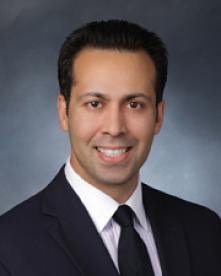Addressing whether a patent owner involved in a pre-America Invents Act (AIA) ex parte reexamination, could challenge an adverse reexamination decision in a district court action under 35 U.S.C. § 145, the U.S. Court of Appeals for the Federal Circuit affirmed a district court’s ruling that it lacked subject matter jurisdiction, finding that § 145 does not authorize a patent owner, in a pre-AIA ex partereexamination, to bring suit in a district court challenging the Board’s action. In re Teles AG Informationstechnologien, Case No. 12-1297 (Fed. Cir., Apr. 4 2014) (Dyk, J.).
Teles owned a patent directed to a method for transmitting data in a telecommunications network and switch for implementing said method. In 2007, prior to the enactment of the AIA, a third party submitted a petition for ex parte reexamination. During reexamination, the examiner rejected the claims as being obvious over a combination of prior art references. Teles appealed the rejection to the Board of Patent Appeals and Interferences (the Board). The Board affirmed the examiner’s rejection. Teles sought review of the Board’s decision in the United States District Court for the District of Columbia pursuant to § 145. The district court dismissed the case for lack of subject matter jurisdiction, noting that Teles was a patent owner, not a patent applicant, and at the same time transferred the case to the Federal Circuit. Teles appealed.
As an initial matter, the Federal Circuit determined that the district court erred by dismissing the case and then transferring it. After a dismissal, there was nothing to transfer. Regardless, the Federal Circuit reviewed the case as if it had been transferred properly.
Turning to the legislative history of § 145, the Federal Circuit noted the statue was amended in 1999 to state that an applicant dissatisfied with the decision of the Board may, unless appeal has been taken to the Federal Circuit, have remedy by civil action against the Director in the United States District Court for the District Court of Columbia. The Court also noted that, at that same time, Congress (for the first time) amended § 134 to distinguish between “a patent applicant,” “a patent owner,” and “a third party.” Congress also amended § 141 to state “[a] patent owner in any reexamination proceeding dissatisfied with the final decision in an appeal to the Board… under section 134 may appeal the decision only to the United States Court of Appeals for the Federal Circuit.” The Federal Circuit concluded these amendments on their face precluded a patent owner from appealing the Board’s decision to the district court under § 145. Only the Federal Circuit is a proper venue for such an appeal.
The Federal Circuit rejected Teles’ argument that an action to district court by the patent owner was permitted because such an action was not an “appeal.” The Court further rejected the argument that an action in district court was available to a patent owner because another pre-AIA statute, § 306, stated that a patent owner had recourse under § 145 in district court, finding that the § 306 language was a drafting error. Finally, the Federal Circuit noted that during the legislative history of the AIA, Congress recognized the error in § 306 and corrected it in the implementation of the AIA.
The Federal Circuit then turned to the Board’s rejection of Teles’s claims as being obvious. The Court rejected Teles’ argument that the Board’s decision rests on an incorrect claim interpretation. In interpreting the claims, the Board construed the claim recitation “means to produce the control signal” under § 112 ¶ 6 and further agreed with the examiner that the function of producing the control signal requires monitoring factors related to demands of quality. The Board refused to limit those factors to only a bandwidth quality as suggested by Teles.
Teles argued that Board’s claim construction is incorrect in view of the inventive concept defined by the inventor (monitoring the bandwidth of a particular transfer). To this end, Teles argued that the Supreme Court’s decision in Mayo requires that the “inventive concept” of the application be used in the claim construction. The Federal Circuit disagreed, explaining that the Supreme Court in Mayoreferred to “inventive concept” only in analyzing whether the claims are directed toward a patentable subject matter and not whether the claims are novel and nonobvious.



 i
i

